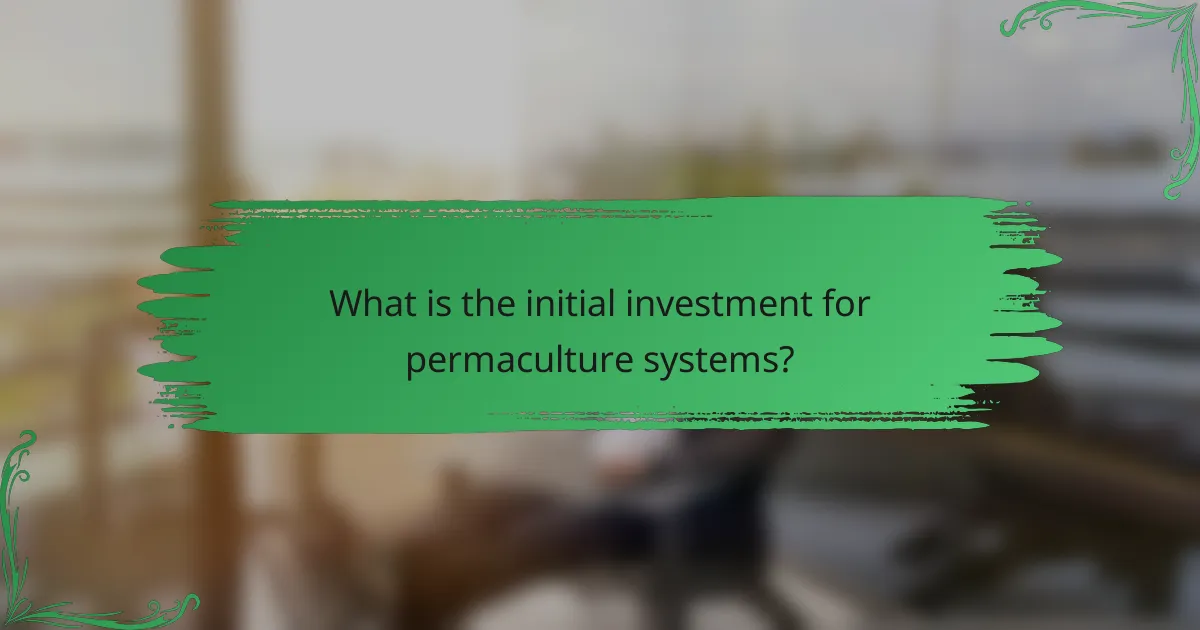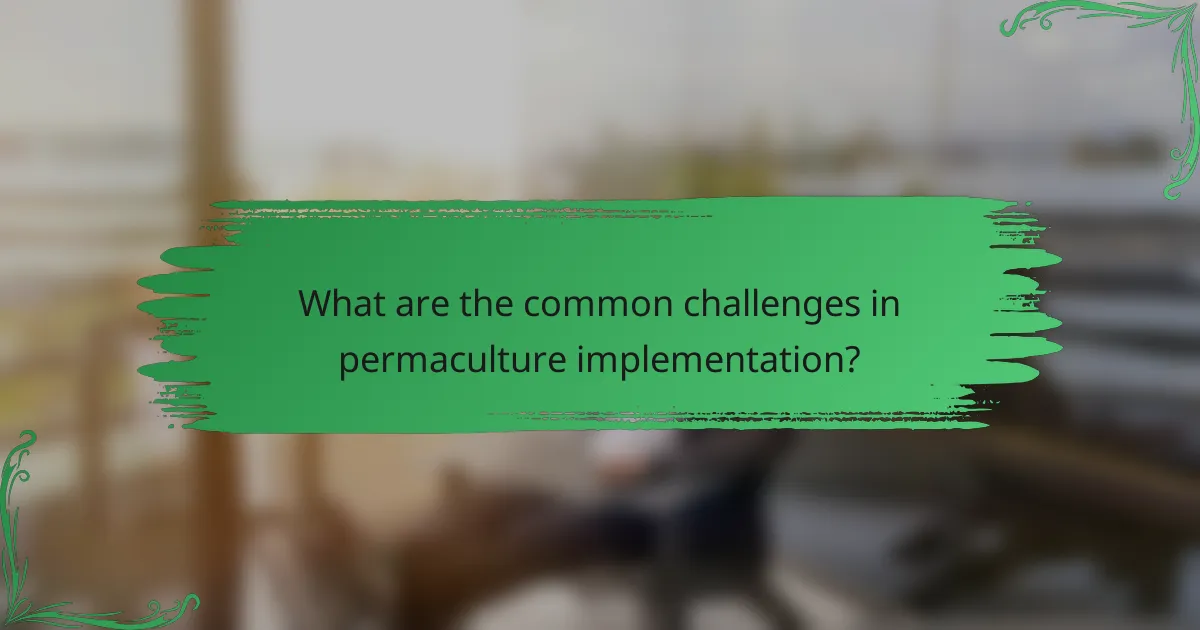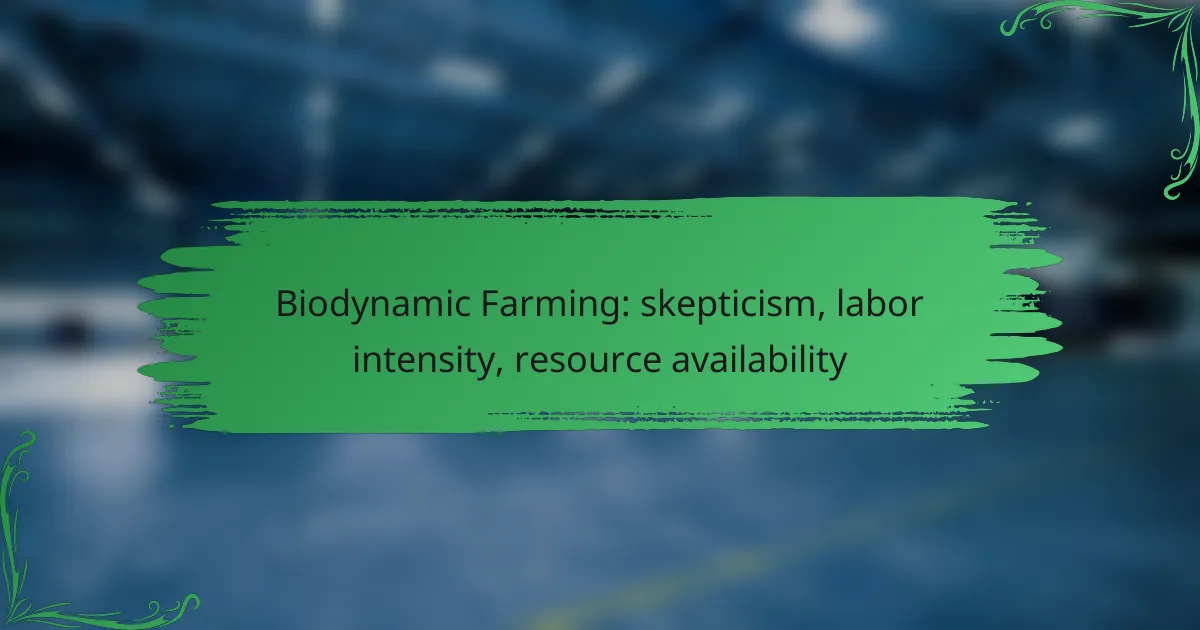Permaculture systems focus on creating sustainable agricultural practices that emulate natural ecosystems, emphasizing design principles and ecological relationships. While the initial investment can vary widely based on the complexity of the design and specific site requirements, understanding the necessary knowledge and skills is crucial for successful implementation. Addressing the knowledge gap in permaculture can enhance the effectiveness of these systems, ultimately leading to more resilient and productive landscapes.

What are the key components of permaculture systems?
Permaculture systems are designed around sustainable agricultural practices that mimic natural ecosystems. Key components include design principles, ecological relationships, soil health, water management, and plant selection.
Design principles
Design principles in permaculture focus on creating efficient and sustainable systems. They emphasize working with nature rather than against it, ensuring that each element serves multiple functions while minimizing waste.
Common design principles include zoning, which organizes space based on usage frequency, and stacking functions, where one element contributes to several needs. For example, placing a chicken coop near a vegetable garden allows for natural pest control and fertilization.
Ecological relationships
Understanding ecological relationships is crucial in permaculture. These relationships involve interactions between plants, animals, and microorganisms that enhance biodiversity and resilience.
For instance, companion planting pairs species that benefit each other, such as tomatoes and basil, which can improve growth and flavor. Creating habitats for beneficial insects can also promote pollination and pest management.
Soil health
Soil health is a foundational component of permaculture systems, as it supports plant growth and ecosystem stability. Healthy soil is rich in organic matter, nutrients, and microbial life.
Practices like composting, mulching, and crop rotation help maintain soil fertility and structure. Avoiding chemical fertilizers and pesticides is essential to prevent soil degradation and promote long-term health.
Water management
Effective water management is vital in permaculture to ensure sustainable use of this resource. Techniques such as rainwater harvesting, swales, and ponds can help capture and retain water in the landscape.
Implementing drip irrigation systems can also minimize water waste while providing consistent moisture to plants. Understanding local rainfall patterns and soil drainage is key to designing an efficient water management system.
Plant selection
Choosing the right plants is critical in permaculture, as it influences the overall success of the system. Selecting native and drought-resistant species can enhance resilience and reduce maintenance needs.
Consideration of plant diversity is essential; a mix of perennials and annuals can provide year-round yields and support various ecological functions. Additionally, understanding the growth habits and nutrient needs of selected plants can optimize their placement within the system.

How to design a permaculture system?
Designing a permaculture system involves creating a sustainable environment that mimics natural ecosystems. Key considerations include site analysis, zone planning, and element integration to ensure efficiency and harmony.
Site analysis
Site analysis is the first step in designing a permaculture system. This involves assessing the land’s topography, soil quality, climate, and existing vegetation. Understanding these factors helps in determining the best use of space and resources.
Consider conducting soil tests to evaluate pH and nutrient levels, which can guide your planting decisions. Additionally, observe sun patterns and wind directions to identify microclimates that may influence plant growth.
Zone planning
Zone planning organizes the layout of your permaculture system based on the frequency of use and maintenance needs. Zones are typically categorized from 0 to 5, with Zone 0 being your home and Zone 5 representing the wilderness area.
For example, Zone 1 includes high-maintenance areas like vegetable gardens, while Zone 4 might consist of managed forests. This arrangement minimizes energy expenditure by placing frequently accessed elements closer to your living space.
Element integration
Element integration focuses on how different components of your permaculture system work together. This includes combining plants, animals, and structures to create a self-sustaining ecosystem. For instance, planting nitrogen-fixing plants near heavy feeders can enhance soil fertility.
Consider using companion planting techniques, where certain plants benefit each other when grown together. Additionally, integrating water management systems, such as swales or rain gardens, can improve water retention and reduce erosion.

What is the initial investment for permaculture systems?
The initial investment for permaculture systems can vary significantly based on the scale and complexity of the design. Generally, costs can range from a few hundred to several thousand dollars, depending on factors such as land preparation, plant selection, and infrastructure needs.
Cost breakdown
The cost of establishing a permaculture system typically includes expenses for land, soil amendments, plants, and necessary tools or equipment. For a small garden, initial costs might be in the low hundreds of USD, while larger projects could exceed several thousand USD.
Key components to consider in the cost breakdown are:
- Soil preparation and amendments
- Seeds and plants
- Water management systems
- Infrastructure such as fencing or pathways
Funding options
Additionally, crowdfunding platforms and community-supported agriculture (CSA) models can provide financial support. Engaging with local permaculture groups may also reveal shared resources or cooperative purchasing opportunities.
Long-term savings
For instance, a well-designed permaculture garden can yield food for years, minimizing grocery bills. Additionally, the use of natural pest control and soil enrichment techniques can lower ongoing expenses related to chemical inputs.

What knowledge is required for successful permaculture?
Successful permaculture requires a solid understanding of ecological principles, sustainable practices, and local environmental conditions. Knowledge in soil health, water management, and plant interactions is essential for designing effective systems that mimic natural ecosystems.
Permaculture courses
Permaculture courses provide structured learning experiences that cover essential concepts and practical skills. These courses often range from a few days to several weeks and may include hands-on projects. Look for accredited programs that offer a Permaculture Design Certificate (PDC) to ensure comprehensive training.
Consider local institutions or community colleges that may offer courses tailored to your region’s climate and ecology. Online options are also available, allowing for flexible learning schedules.
Online resources
Online resources for permaculture include websites, webinars, and video tutorials that cover various topics from design principles to specific techniques. Websites like Permaculture.org and the Permaculture Research Institute offer a wealth of articles and guides.
Utilizing platforms like YouTube can provide visual demonstrations of permaculture practices. Additionally, joining online forums or social media groups can facilitate discussions and knowledge sharing with experienced practitioners.
Community workshops
Community workshops are valuable for hands-on learning and networking with local permaculture enthusiasts. These workshops often focus on specific skills, such as composting, rainwater harvesting, or creating garden beds.
Check local community centers, gardening clubs, or environmental organizations for upcoming events. Participating in these workshops can enhance your practical skills and deepen your understanding of local ecosystems.

What are the common challenges in permaculture implementation?
Common challenges in permaculture implementation include design complexity, an initial learning curve, and resource availability. These factors can significantly impact the success and sustainability of a permaculture system.
Design complexity
Permaculture design involves creating a self-sustaining ecosystem, which can be intricate and multifaceted. Factors such as site analysis, plant selection, and layout planning must be carefully considered to ensure compatibility and efficiency.
To manage design complexity, start with a clear plan that outlines your goals and the specific elements you want to incorporate. Utilizing design tools like zone planning and sector analysis can help simplify the process and enhance overall effectiveness.
Initial learning curve
The initial learning curve for permaculture can be steep, as it requires knowledge of ecology, gardening techniques, and sustainable practices. Many newcomers may feel overwhelmed by the breadth of information and skills needed to implement a successful system.
To ease this learning curve, consider enrolling in local workshops or online courses that focus on practical applications of permaculture principles. Joining community groups or forums can also provide support and shared experiences that facilitate learning.
Resource availability
Access to necessary resources, such as seeds, tools, and organic materials, can vary significantly based on location. In some areas, sourcing native plants or composting materials may be challenging, impacting the establishment of a permaculture system.
To address resource availability, research local suppliers and consider bartering or sharing resources with neighbors. Creating a network of local permaculture practitioners can also help in pooling resources and knowledge for mutual benefit.

How to overcome the knowledge gap in permaculture?
To overcome the knowledge gap in permaculture, individuals can engage in hands-on learning, seek mentorship, and utilize available resources. Building a solid foundation in permaculture principles is essential for effective implementation and design.
Utilizing online resources
Online platforms offer a wealth of information on permaculture practices, including articles, videos, and forums. Websites like Permaculture Research Institute and YouTube channels dedicated to sustainable living can provide valuable insights and practical examples.
Consider enrolling in online courses that cover various aspects of permaculture design. Many of these courses are affordable, ranging from USD 50 to USD 300, and can be completed at your own pace.
Joining local permaculture groups
Connecting with local permaculture groups can significantly enhance your understanding through shared experiences and knowledge. These groups often host workshops, field days, and community projects that allow for practical application of permaculture principles.
Look for meetups or community gardens in your area where you can network with like-minded individuals. Engaging with local experts can provide tailored advice relevant to your specific climate and soil conditions.
Hands-on experience
Gaining hands-on experience is one of the most effective ways to bridge the knowledge gap in permaculture. Volunteering on permaculture farms or participating in internships can provide practical skills and insights that theoretical learning cannot.
Consider dedicating a few hours each week to a local farm or garden. This not only enhances your understanding but also builds a network of contacts who can support your permaculture journey.



